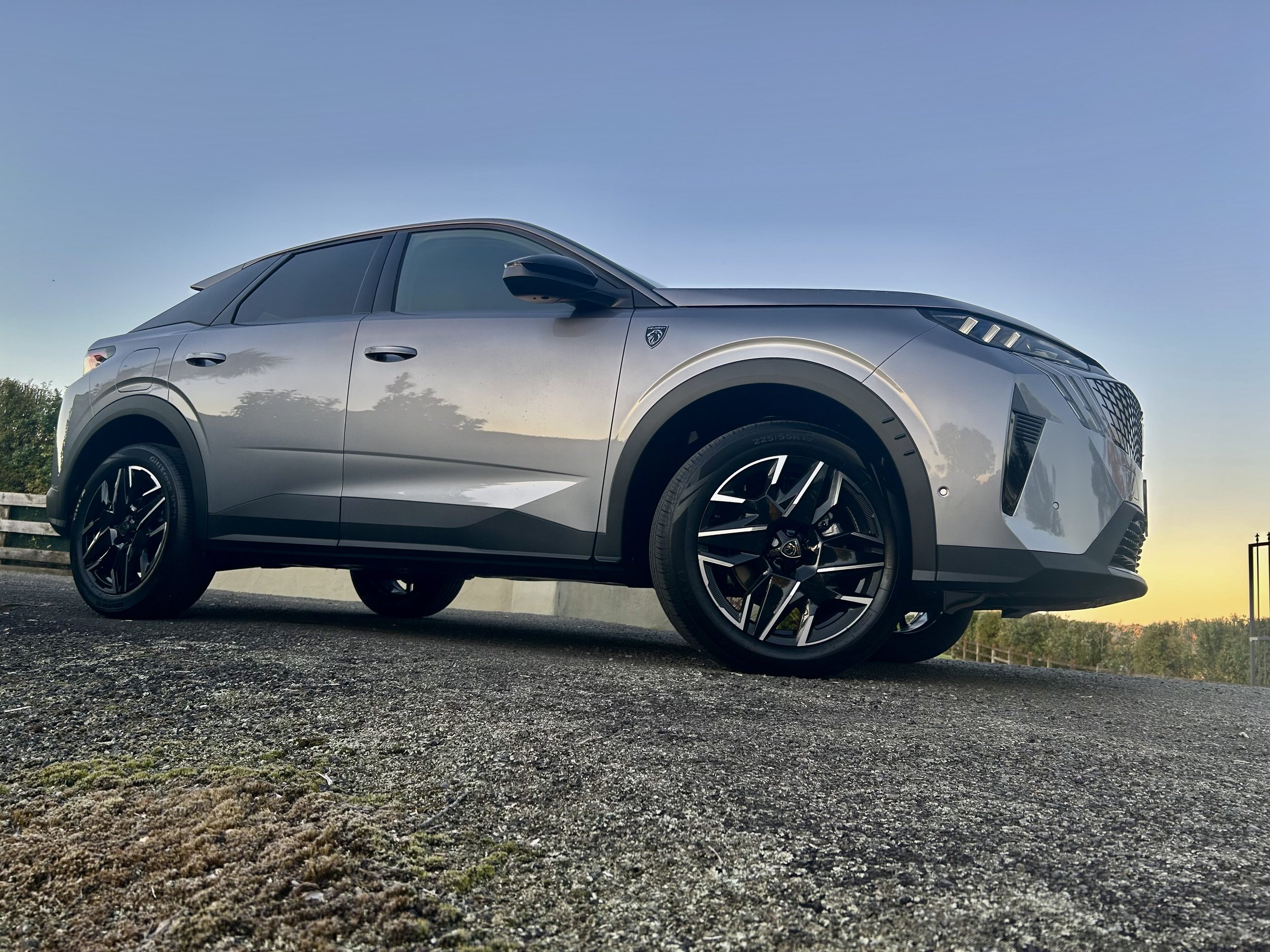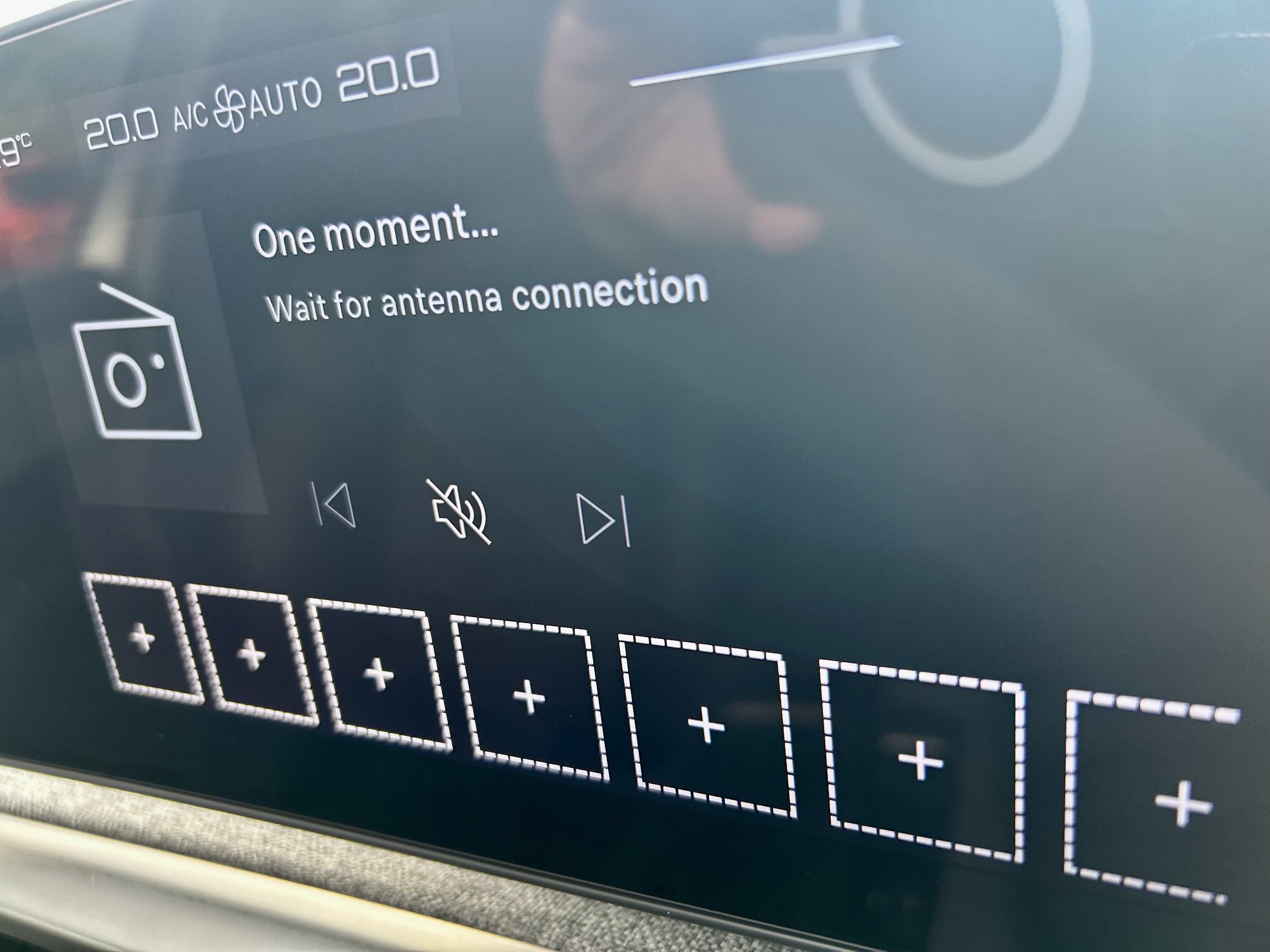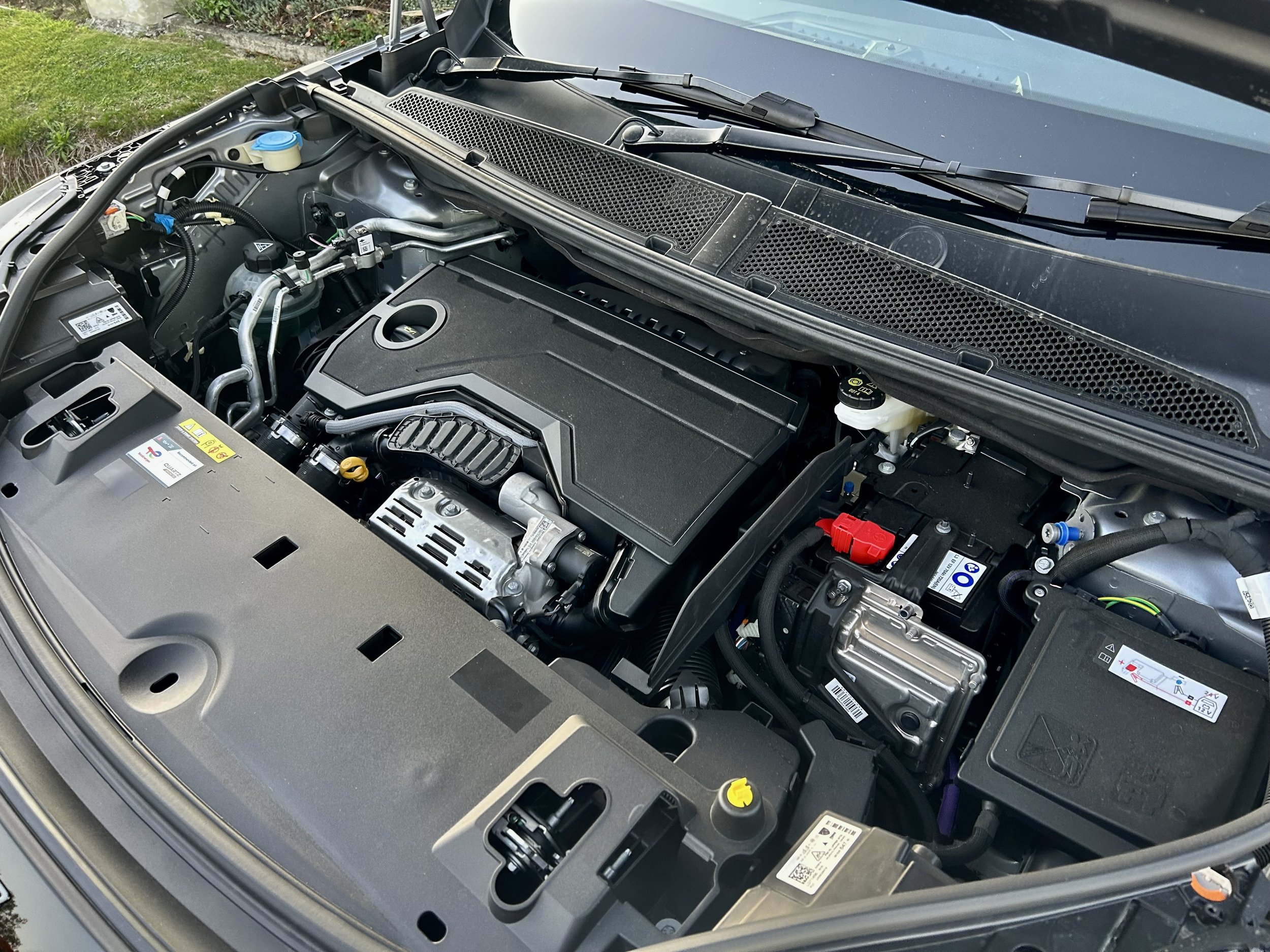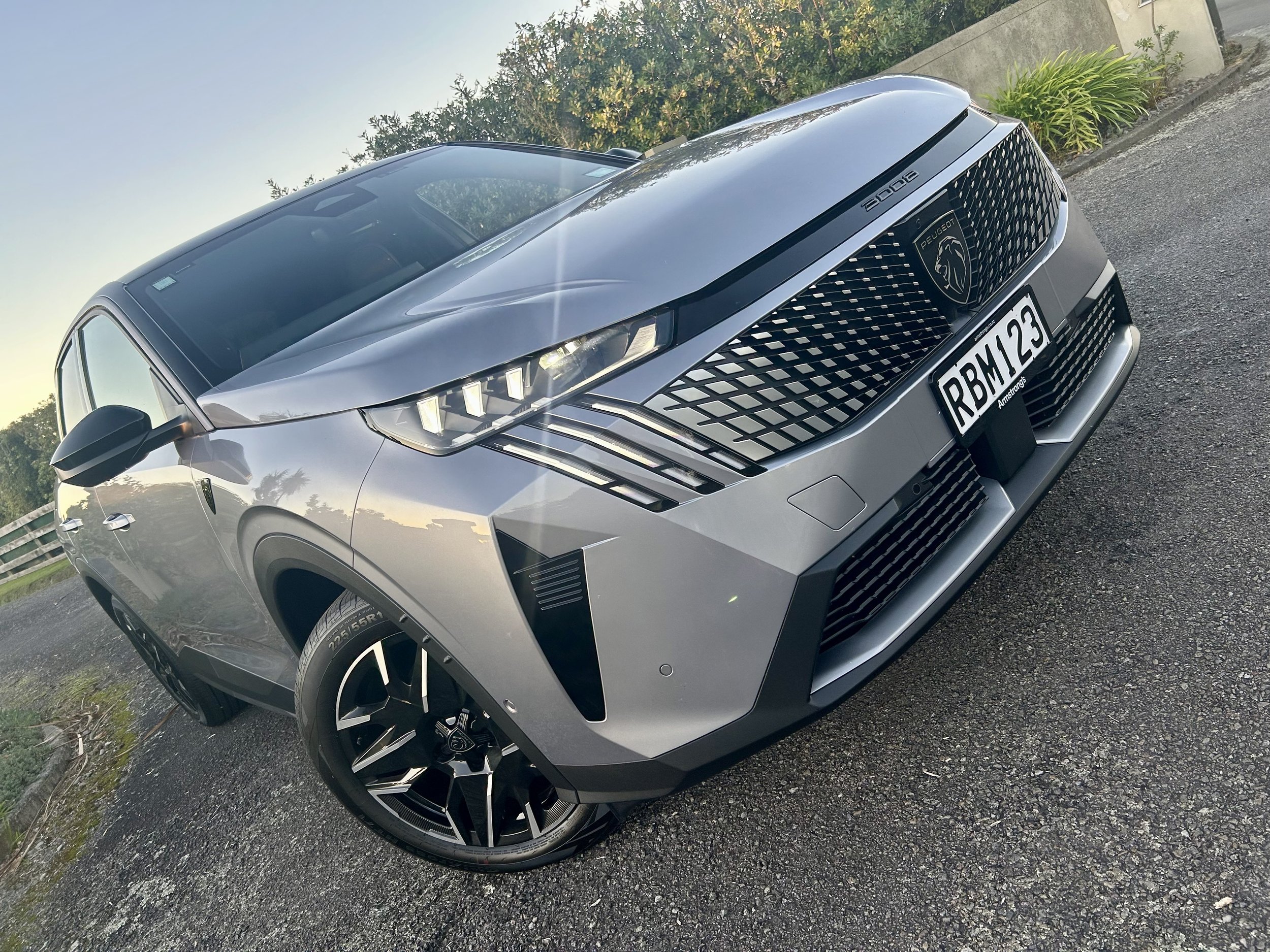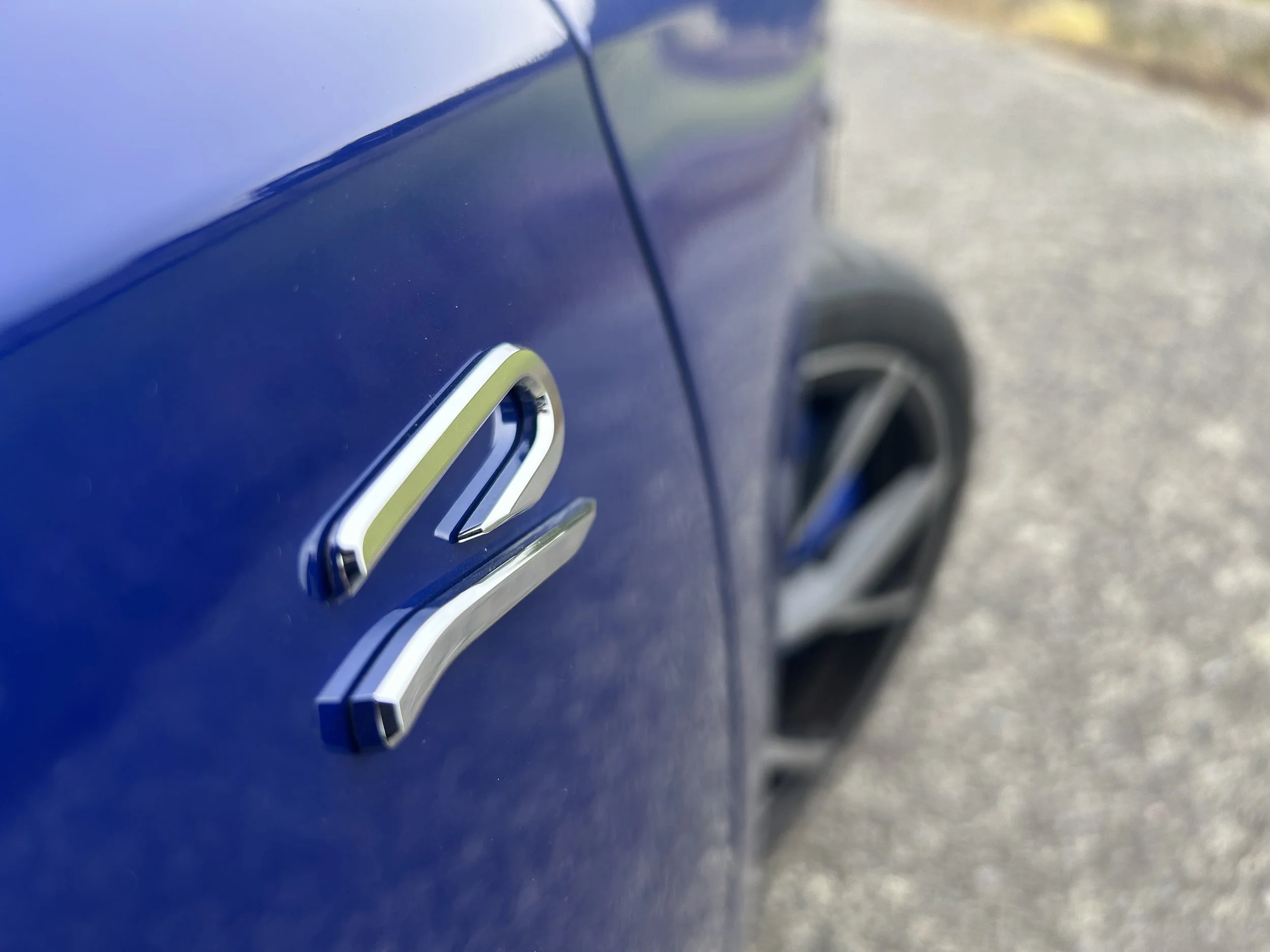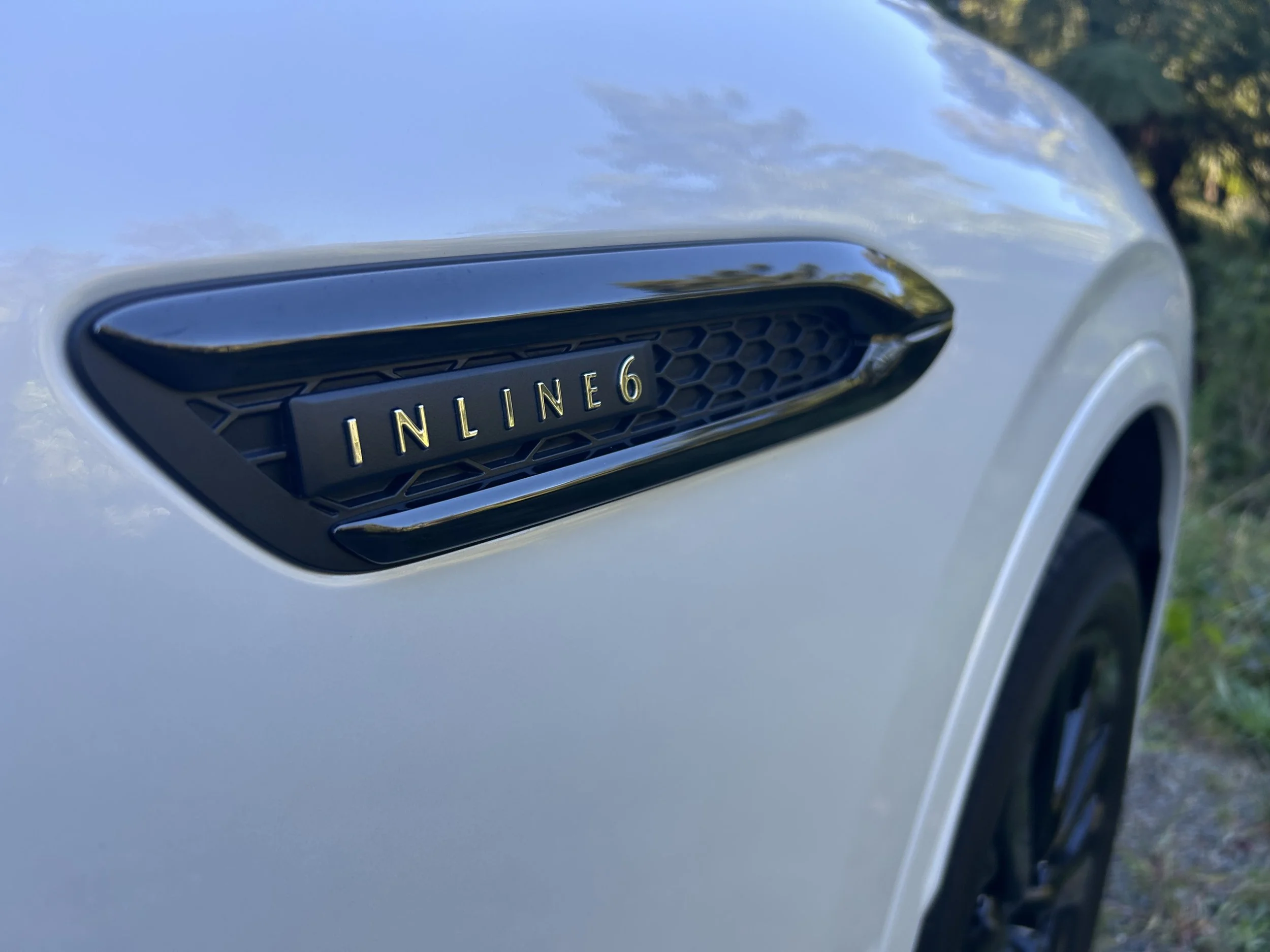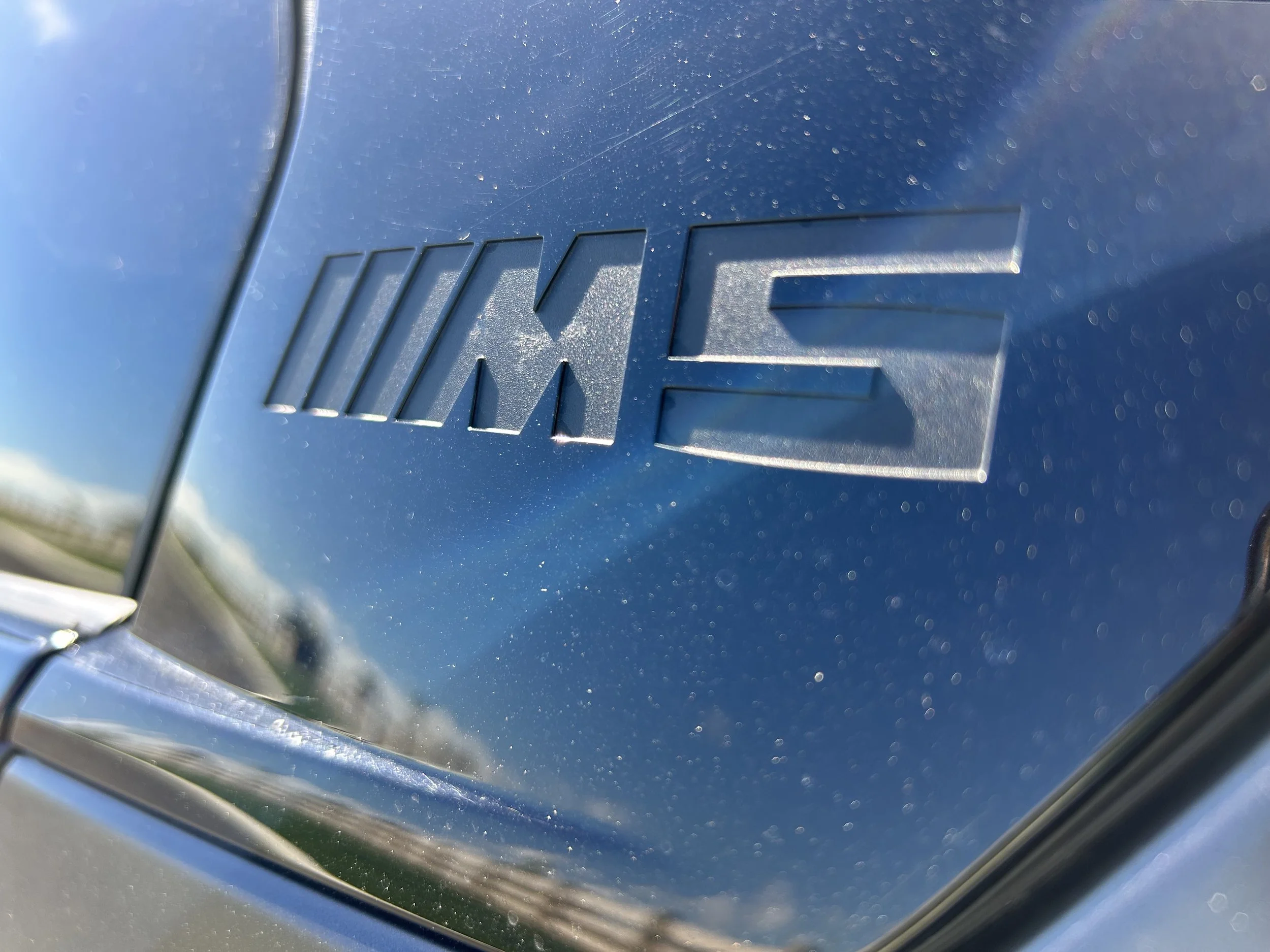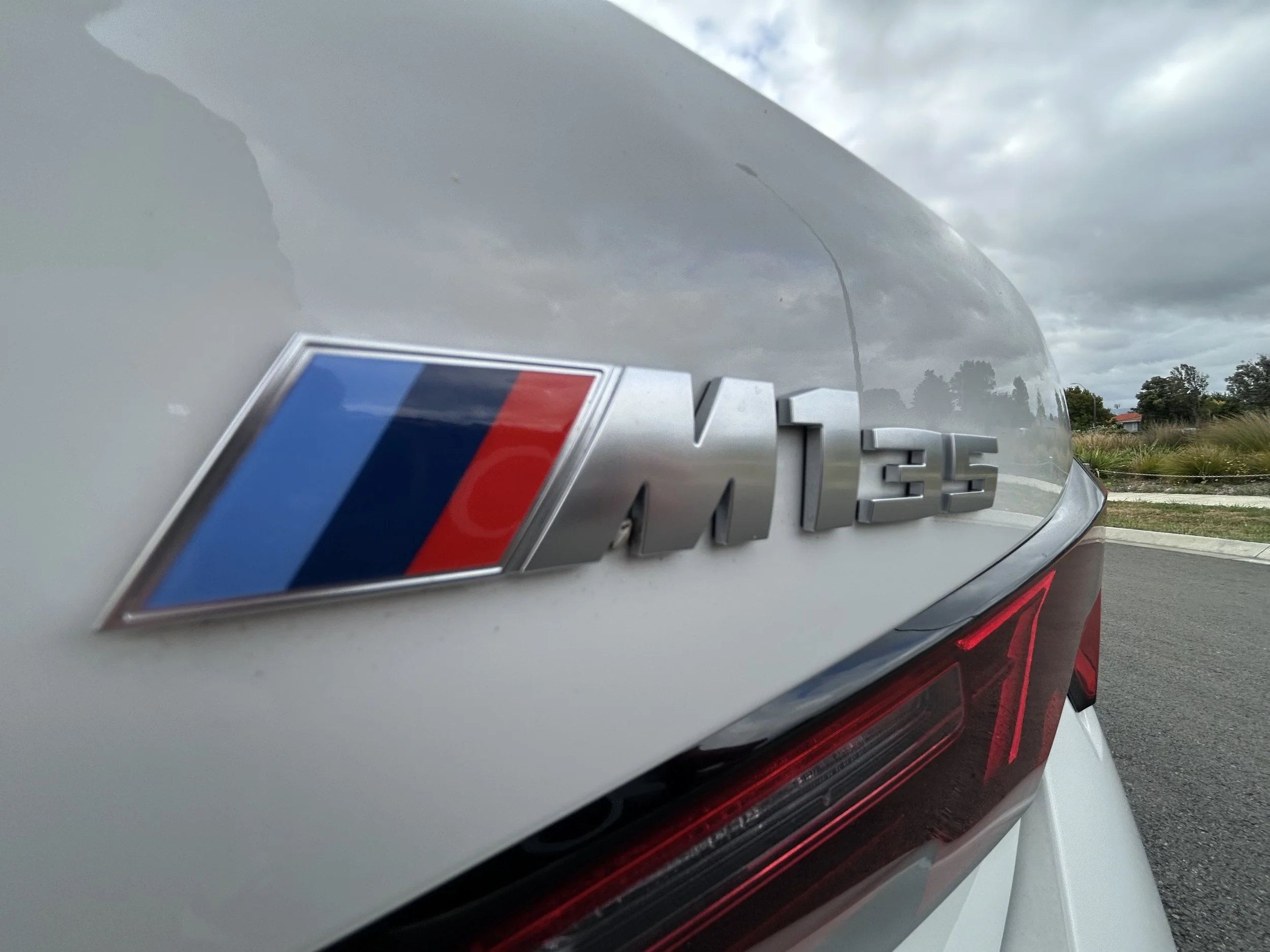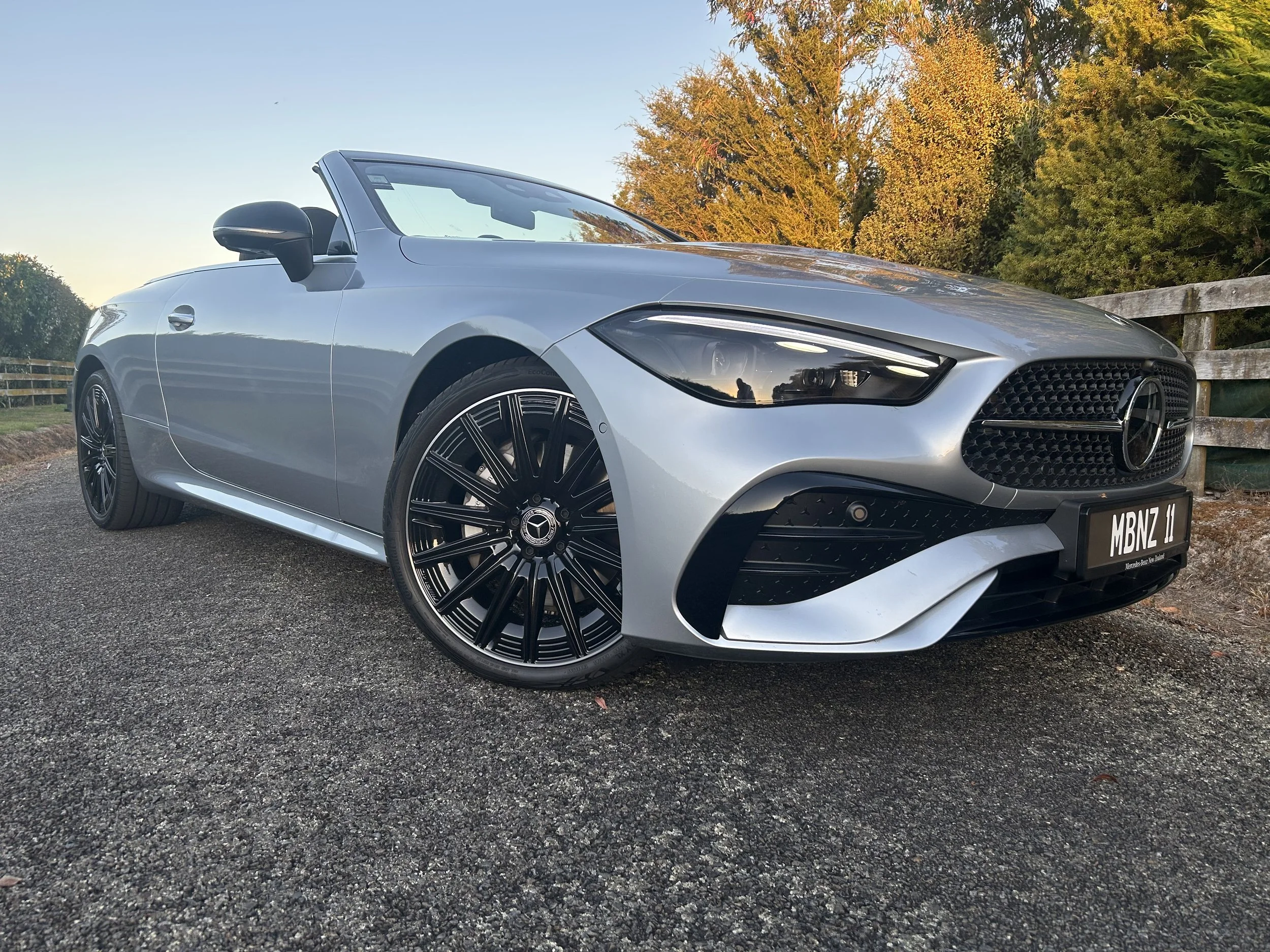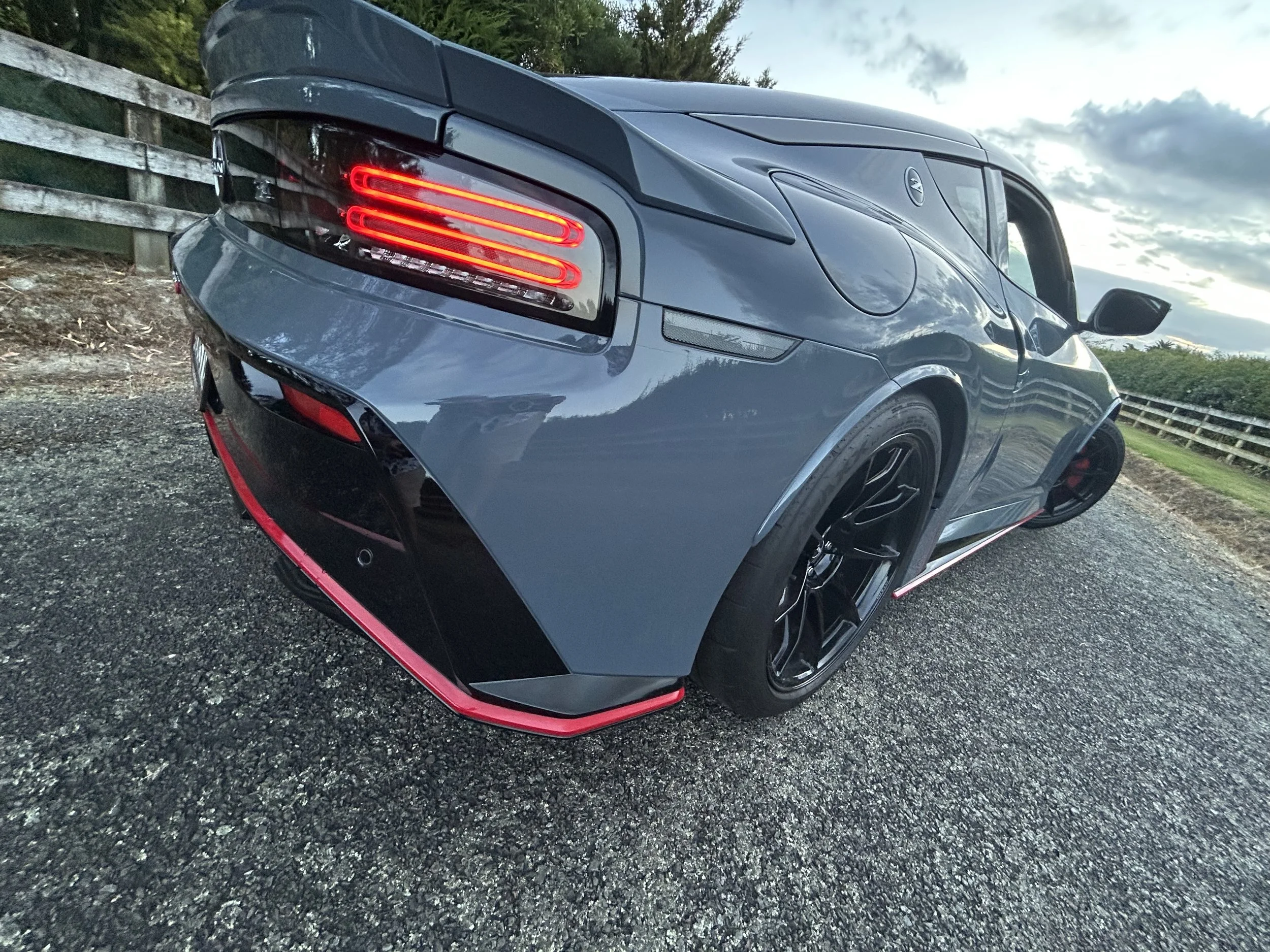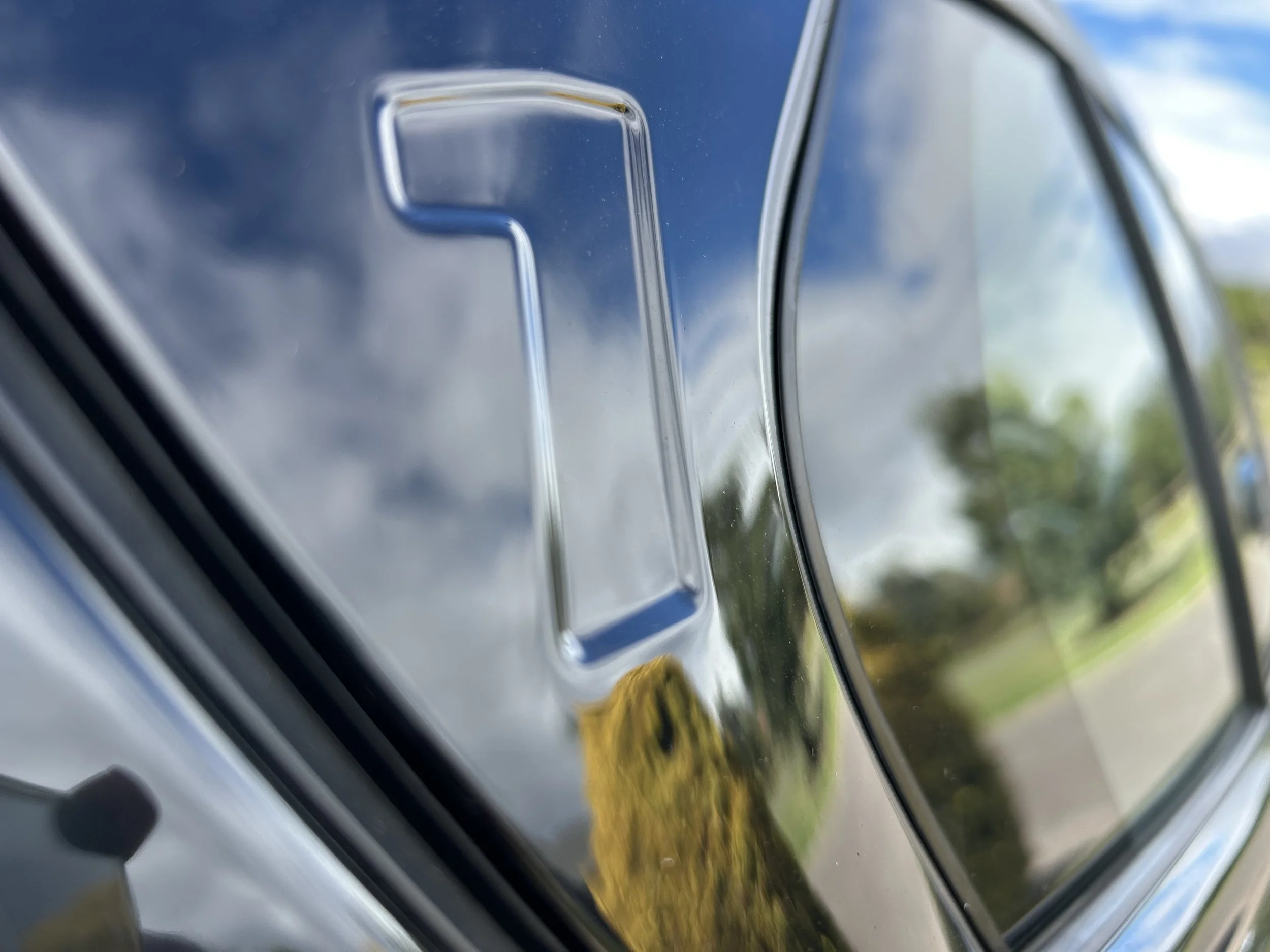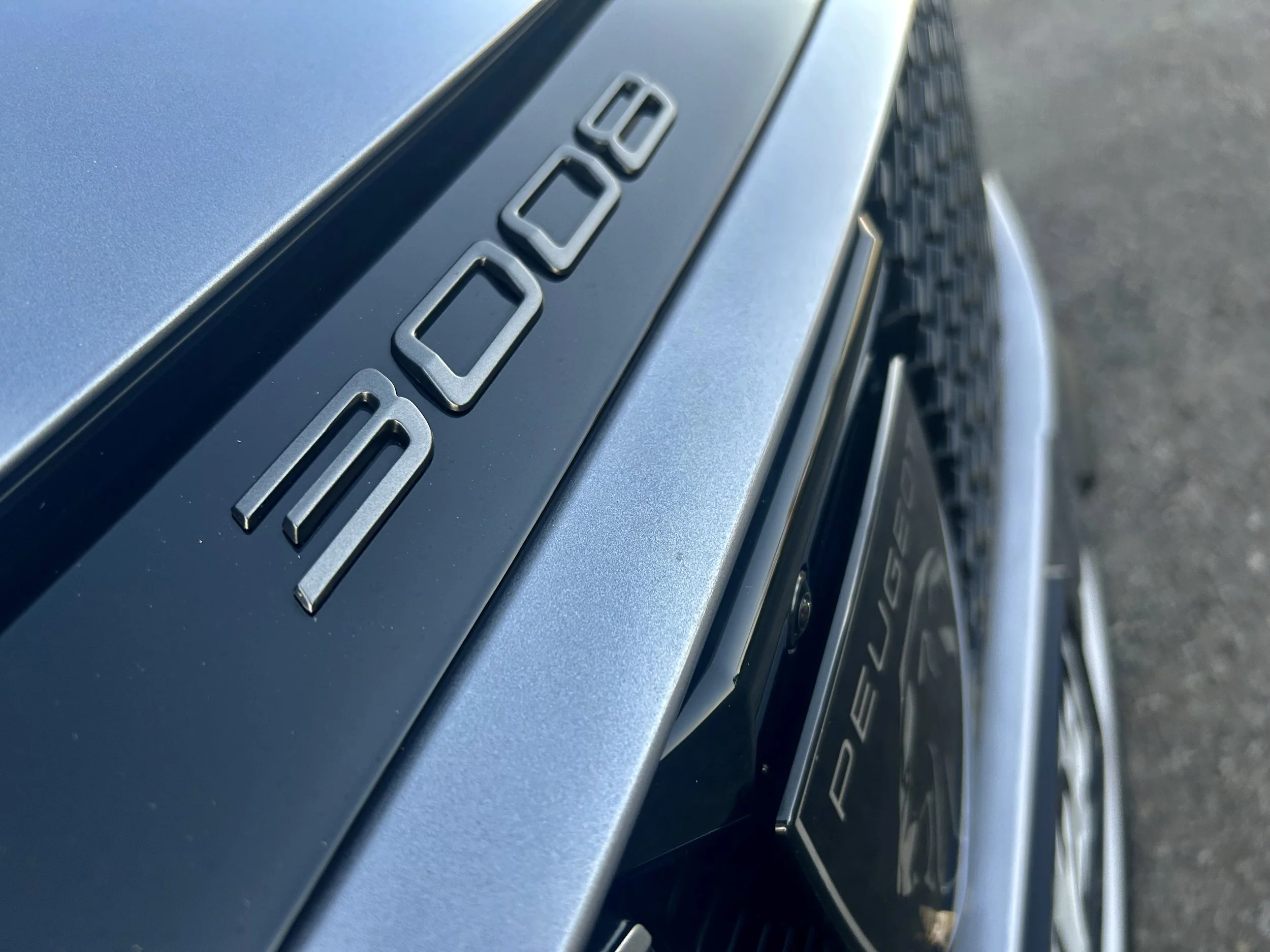Peugeot 3008 Hybrid GT road test review: Small heart, big ambition
/Swoopy styling, more tech and a lion-hearted three cylinder engine with electric assist arrive for this five-seater medium SUV.
Price: $62,480
Powertrain: 1199cc three-cylinder petrol with 48 volt hybrid assist, 100kW/230Nm combined output; six speed auto.
How big: 4542mm long, 1895mm wide, 1641mm tall.
We like: Doesn’t feel underpowered in day-to-day driving; while not everyone is a fan of the i-Cockpit layout, adding the 21-inch screen is impressive evolution.
Not so much: Pricey; minor ergonomic irks.
EVOLUTION of the species can be recurrent - it seems generally held that crabs were always crabs, just different sized and leg count - and convergent; meaning, as example, what was once a dinosaur is now a chicken.
All over millions of years, of course. For the Peugeot 3008, a far more compact time frame - a matter of less than two decades - has evolved the car as it first proposed into what we have now.
You’d call it a convergent development. The first generation of this nameplate broke covers in 2007 wasn't that well-received; so the second that came in 2016 delivered as a fresh start.
If the market didn’t want a people carrier, would they feel better about this genre as a sports utility wagon? An emphatic ‘oui' to that one: The second generation sold more than 1.3 million units until 2023, when the third sequel was revealed. The car as you see it now.
So where does it stand on the evolutionary scale? A foot in both camps, really. There’s some degree of same-ness in respect to styling, even though this one has a more coupe-ish silhouette. In respect to their general purpose, the immediate predecessor’s strengths keep showing. Yet the latest is clearly dedicated to new causes and could be considered much bolder in its ambition.
On arrival nine years ago, the previous 3008 presented in three distinct trim levels and with a choice of three engines, a 1.6-litre petrol, and a pair of diesels, in 1.6 and 2.0-litres, all connected to an eight-speed automatic. Old school.
All those have gone now. Today the heart of the lion is a mild-hybrid powertrain based on Peugeot’s 1.2 ‘PureTech’ three-cylinder turbocharged petrol engine, connected to a six-speed twin-clutch gearbox. It’s a new age.
Siting across two trim deliveries, the latest unit delivers less power and torque than previous offerings but almost matches the old diesels for economy and beats all the predecessor powertrains for emissions.
As much as it’s high-tech thing, the powertrain for NZ is actually just a starting point for Peugeot’s future-proofing plan specific to this and other cars.
Internationally, the 3008 and closely-related 5008 come with three identical electric-involved flavours. In either, above this self-charging type, comes a plug-in. Beyond that sites a full electric.
Often manufacturers launch the electric version of a car down the line and get the internal combustion involved ones out first; Peugeot took the opposite approach, releasing the zero-emissions E-3008 then this petrol hybrid. The strategy reminds all head office bets will ultimately carry on battery cars. Total electrification of Peugeot’s lineup is still set to occur by 2030.
How that plays into the New Zealand mindset is not clear. The PHEV and EV are not here and surely there’s no mystery why.
Those sectors right now are struggling to pull back from huge lapse of interest during 2024, the year that began without rebates then delivered Road User Charge introduction.
Going forward, the battery end of the market should logically regain zap. But when? Peugeot rights’ holder Auto Distributors New Zealand seems prudent in restricting the 3008 to the only electric-involved format without a plug.
More than uncertainty about consumer interest in anything more radical surely drives this strategy; price must also be a factor.
Battery implementation comes at a cost. The old line-up kicked in with an Allure that sat $10 under $40,000. No chance of anything like that now.
Today the least expensive 3008 remains an Allure - but it’s now a $57,980 car. That makes it $3000 dearer than the previous family flagship, the 2.0-litre diesel GT.
The new GT on test holds a $4500 premium above the latest Allure and stands as the most expensive 3008 ever offered here.
It in particular is now placing in a semi-premium sector and conceivably competing with cars that, until now, that were so undercut as to really not be threats. The Volkswagen Tiguan is but one obvious example.
If this is the end game for the hybrid, you could only imagine how much more the PHEV and fully EV kinds might have been.
So, anyway, it’s another brave new start, putting on a brave new face.
This 3008 is similarly-sized and the shape won’t seem wholly unfamiliar, regardless it has a more rakish roofline. But it’s on a wholly new platform; the Stellantis STLA modular architecture purpose-designed make room for a battery that’s far larger, as a lithium ion 98kWh unit, in the EV than the very modest 0.89kWh NiMH type in this hybrid.
The latest car also faces up to the market with a fresh frontal look. Avant garde has long been a baseline for French stylists; Peugeot started a new design language with the 308 in 2021 and enhanced it in less than two years for subsequent models, but among all the 3008 was the boldest one.
The front fascia is an exercise in extreme flamboyance; three claw-like daytime running lights extending downward on the bumper to complement the slim LED headlights. Rather than a conventional upper grille, there’s a panel adorned with a 3D pattern where the brand's logo takes centre stage.
It’s certainly eye-catching and the detailing is amazing; but also very brash. Those who might be uncertain in daylight shouldn’t pass final judgement until they see how it illuminates in darkness.
The interior? Well, it’s also highly dressed up for fashion week, but with a twist.
There’s no talking Peugeot out of its polarising i-Cockpit layout with a tiny steering wheel. Even though the wheel rim is now flattened at the top, there’s still risk of the layout affecting the driving position. If you are tall you might find yourself craning your neck to see the bottom part of the digital instrument display.
Nonetheless, the new ingredient of a vast curved 21-inch screen (technically two screens side-by-side) is a better solution than the old way, of a small instrument binnacle with a heads up display.
A flairful element that will fascinate those keen to explore how it exactly joins the cabin proper, the screen overall looks modern and upmarket.
The instrument-dedicated end is easy to read and can be fathomed at a glance; the infotainment side is more heavily-loaded but also has smart graphics. It’s home to all the usual functions, although the decision to keep buttons to a minimum has meant it has plenty to do, so you’ll do well to bone up on the shortcut provisions.
The infotainment section is managed by Peugeot i-Connect, which features over-the-air map updates, Bluetooth, wireless smartphone connectivity and a multi-speaker stereo. It’s clever and touch interactions are fast and seamless, but the microprocessors can be overwhelmed if you rush it too much.
Fast-firing through the audio modes to finally settle on the radio put it into a mood. A message displaying with a ‘one moment, wait for antenna connection’ became a drop-lipped timeout, only resolved by turning the ignition completely off, then on again.
Given the price heft, it’s good to see not only more tech and kit but smart finishing.
The source plant, Sochaux in France, is the world’s oldest car factory, having commissioned in 1912, but it’s been utterly modernised and 3008 is said to be the pride of the place; they’ve knocked out more than one million. The test example was an exemplar of assembly excellence. That it was the first of thousands of test cars I’ve had to lack a bonnet stay was a chuckle-raising quirk, but I’d say this more likely due to some Kiwi meddling than any line worker oversight.
Gloss black exterior trim, alloy wheels, LED lights front and rear, keyless entry and starting, two-zone climate control, LED cabin lighting, heated mirrors and part-synthetic-leather upholstery are standard fare, but for the full Jean Paul Gaultier the GT is the go.
Eight-colour LED ambient lighting, a more bombastic stereo, heating for the steering wheel and front seats, massage function for those chairs, and the upholstery features tasteful Alcantara trim. The GT also stands out by having pixel-LED headlights with adaptive main beam and a unique taillight design, plus those Peugeot shield badges on the front wings.
Across-the-board driver assist, crash avoidance and safety provision run to six airbags, autonomous emergency braking, traffic sign recognition, lane assist and blind-spot monitoring, plus front and rear parking sensors. The GT includes adaptive cruise control with traffic jam assist, rear cross-traffic alert and 360-degree cameras to give a plan view of the car’s surroundings. How safe? Evaluation by Euro NCAP and ANCAP has yet to occur.
The ‘French-ness’ is patent. The decision to use fabric coverings on the dash panels is a touch of Gallic flair that creates a stylish and tactile surface atop regular plastics. The bank of built-in ambient lighting also feeds impression of a high-end ambience.
The i-Cockpit layout isn’t the sole quirk. The drive selector being set high on the dash next to the air vents and beside the engine-start button, is a proximity that takes some learning. Don’t be surprised in, at least initially, you try to select gears with the ‘iToggle’ shortcut controller closer to your left knee. It’s labelled as a ‘Drive mode’, after all.
The wiper and indicator controls being reversed in European 101, but it’s a shame that in respect to the split-level centre console, the lower part incorporating storage is also kept in LHD, which adds awkwardness to accessing the large covered cubby (above) with loads of storage space, plus USB-C ports.
A more positive aspect is that as much as the coupe-SUV body might seem destined to compromise cabin space, it really doesn’t. Peugeot’s data sets suggest interior dimensions are similar to those for the decently commodious outgoing 3008.
Rear headroom is good and boot space is generous, at 520 litres. The cargo area also features a split-level floor so you can create hidden storage. Fold the back seats down and space rises to 1480 litres.
The big question: Given how much the 3008 has upsized physically and in price, is this the right time for it to come out with the smallest capacity engine yet for the type?
Economy and emissions ‘needs must’ has driven Peugeot to placing a 1.2-litre three-cylinder turbo petrol engine with a 48V hybrid system into this car and also the larger, seven seat 5008.
Those familiar with the back catalogue will be aware all engines in the old range had more on-paper oomph. Just the base 1.6 had 21kW and 10Nm more than the new power plant; the top diesel also had a 33kW gain and both were far more muscular - with 300Nm and 400Nm respectively - and more economical.
But Europe demands better CO2 counts and the 1.2 hybrid’s 122 grams per kilometre, though outshone by the PHEV we don’t see, is nonetheless much cleaner than anything previous.
In respect to drinking rate, the three-cylinder is almost on par with the diesels and just about twice as thrifty as the old petrol; it’s also less thirsty now with the hybrid that when it ran without that assist.
The car returning an average 6.3 litres per 100km overall from 512 kilometres’ operation was 1.1L/100km short of the count Peugeot claims from its own trials, but still seemed fair for a car of this size, given the mix of open road and urban driving it was exposed to. The on-board calculator reckoned, at point of the car being handed back, there was enough left in the 55-litre tank to achieve another 240kms’ driving.
Meantime, brand confidence it can do a reasonably job in performance terms is not overly-optimistic. Sure, it’s a car that entertains a measured pace. Yet though it sounds puny for a car of this size, by and large this unit delivers above expectation.
Naturally, moments of full performance require the engine’s neck to be thoroughly wrung, but at least it makes a nice noice when pushed hard. Settle back a bit and you find the powertrain’s refinement is very good.
Driving with a full load of occupants and a boot full of stuff will have to the ultimate challenge, of course. That didn’t happen, but the relatively modest 750kg/1200kg braked towing maximum suggests you can expect only so much from something so small.
The Eco, Normal and Sport driving modes tweak the power steering assistance and throttle response and conceivably affect the hybrid side; for a long-duration city to city run, the car seemed perfectly happy in Normal; Sport stepped up the reactivity, but made it noisier.
Urban use gives best opportunity for that can only propel the car at low speeds and for short bursts, but does a good job of assisting the combustion engine to make it more efficient.the 15.6kW electric motor is supposed to more singularly to the fore, to point it will allow the engine to go dormant.
While the electric motor’s primary role is to enable a touch extra zest, it’s primarily there to eke out economy and even allow the engine to take a rest, albeit briefly.
Peugeot contention that the engine can be off for up to 50 per cent of urban driving seems somewhat of a stretch; from my experience, it seemed to be using the electric sparingly in propelling the car at low speeds and even then for short bursts. If you go quietly enough, it’ll shift off on electric but doesn’t need much encouragement to engage petrol; when cold, that happens with a bit of a jolt. Once everything warms up, it becomes unobtrusive.
French brands like to make their cars fun and, certainly, there’s a dollop of joie de vivre to the 3008, yet overall there’s nothing here that suggests it’s the family’s keenest choice. While the steering is quick and it doesn’t mind being hustled through corners, overall the sense is that suspension has been tuned as much for comfort as body control. In saying that, the ride quality is a touch on the firm side. Not to point that it gets you rattled, but you can tell when smooth tarmac turns to coarse chip. A 255/55 R19 tyre is large for this class of car and, though the wheel size looks smart and the tyres lend excellent grip, this combo might be contributing to it being so attuned to texture feel.
All in all, the 3008 has cleverly evolved a lot; this third generation is a big step from the last and bears very little commonality with the original.
What began as chubby family car offering a mix of MPV and SUV promise has transformed into a sleek coupe-SUV with far more technology and a much grander marketing aspiration.
As a hybrid? It’s good, but there are better efficiency champions for less spend. As an entry into a pricing zone where customers can be incredibly choosy and critical? It’s a car that would seem to demand more careful consideration than it might have previously asked for.

